Decline Bench Press vs Flat Bench: Which Builds the Lower Chest Faster?
Share
If your goal is to sculpt a full, balanced chest, you’ve probably asked yourself this classic question: Should I focus on the decline bench press or the flat bench press? Both are powerful exercises—but when it comes to lower-chest development, the decline press might just have the edge.
In this guide, we’ll break down how each lift works, what muscles they activate, and which is best for your physique and performance goals—all while showing how one adjustable bench can do it all in your home gym.
Why Compare the Decline and Flat Bench Press?
While both movements are chest staples, they aren’t identical in the muscles they emphasize or how they feel.
- The flat bench press develops overall chest size and pressing strength.
- The decline bench press specifically isolates the lower pectoral fibers for that tight, sculpted “lower shelf” look.
Understanding their differences allows you to target specific regions of your chest and avoid the uneven development that many lifters experience.
Decline Bench Press Overview
The decline bench press involves setting your bench at a 15°–30° downward angle, positioning your head below your hips. This shifts the load onto the lower pectoralis major (sternal head) while easing tension on the shoulders.
Why it works:
- The angle directs resistance to the lower chest fibers.
- Less shoulder strain makes it a safer alternative for those with shoulder discomfort.
- Engages stabilizing muscles (core, triceps) more effectively.
Ideal for:
- Athletes seeking lower-chest definition
- Lifters recovering from shoulder issues
- Home-gym users seeking variety and safety
Pro tip: Keep the decline modest—between 15°–25°. Steeper declines shift emphasis away from your chest and can strain your back.
Flat Bench Press Overview
The flat bench press is the universal benchmark for strength and size. The bench lies parallel to the floor, allowing even load distribution across the middle and lower chest, deltoids, and triceps.
Why it works:
- Maximizes total chest engagement.
- Allows heavier weights than other presses.
- Builds raw pressing power and muscle density.
Ideal for:
- Strength athletes and powerlifters
- Building mass and overall chest strength
- Standardized performance tracking
However, because it spreads activation across the chest and shoulders, it doesn’t isolate the lower pecs as effectively as the decline press.
Decline vs Flat Bench: Muscle Activation Breakdown
|
Muscle Group |
Decline Bench Press |
Flat Bench Press |
|
Lower Chest |
Highest activation |
Moderate |
|
Mid Chest |
Moderate |
Highest |
|
Triceps |
High |
Moderate |
|
Shoulders |
Low strain |
Higher strain |
|
Core Engagement |
High |
Moderate |
Studies have shown that pressing at a 15°–30° decline increases activity in the sternal head of the pectoralis major by up to 20% compared to a flat bench.
Which Builds the Lower Chest Faster?
If your goal is specifically to grow and define your lower chest, the decline bench press is the clear winner.
Here’s why:
- The decline position directs resistance downward, recruiting the lower pecs more efficiently.
- The bar path travels toward your sternum instead of your mid-chest.
- Shoulder activation drops, allowing better mind-muscle connection with the lower pecs.
That said, the flat bench still plays a major role—it stimulates overall mass and strength. The best approach? Combine both in your weekly routine. The flat bench builds foundational power; the decline bench sculpts definition and proportion.
Common Mistakes in Both Exercises
Whether you’re pressing flat or on a decline, these errors can sabotage progress:
- Bouncing the bar off your chest: Use controlled motion to protect joints and maximize tension.
- Flaring elbows too wide: Keep them at about 45°–60° to avoid shoulder stress.
- Neglecting full range of motion: Lower until elbows hit 90°, then press to full extension.
- Skipping warm-ups: Shoulder mobility drills and light presses prep the joints.
- Overarching the back: Maintain a natural curve, not excessive arching.
Home Gym Advantage — One Bench for Both
Owning separate benches for flat and decline presses is unnecessary. With an adjustable bench, you can train both efficiently and safely at home.
The Fortira Fit Adjustable Weight Bench Press for Full-Body Workout is designed for exactly that.
- Multiple angle settings: flat, incline, and decline
- Stable, heavy-duty steel frame
- Compact design for small spaces
- Perfect for both dumbbell and barbell use
Switch angles instantly and alternate between decline and flat sets in one session—without sacrificing space or stability.

Sample Chest Workout Using Both Presses
Day 1 – Strength & Power Focus
- Flat Bench Press – 4 sets × 6 reps
- Decline Bench Press – 3 sets × 8 reps
- Dumbbell Flyes – 3 sets × 12 reps
Day 2 – Hypertrophy & Definition Focus
- Decline Dumbbell Press – 4 sets × 10 reps
- Incline Dumbbell Press – 3 sets × 10 reps
- Push-Ups or Dips – 3 sets × 15–20 reps
This combination ensures complete chest development—upper, mid, and lower.
Safety and Performance Tips
- Warm up with 5–10 minutes of light cardio and band work.
- Keep wrists neutral; avoid bending backward.
- Use a spotter or safety arms for barbell presses.
- Focus on controlled eccentric (lowering) phases for better muscle growth.
- Increase weight gradually—progressive overload is your long-term growth key.
Flat vs Decline Bench: Final Verdict
- For lower-chest isolation: Decline Bench Press wins.
- For total chest mass and power: Flat Bench Press remains king.
- For optimal results: Incorporate both into a balanced program.
Each exercise complements the other. Think of the decline bench as your finisher for definition, while the flat bench builds the foundation for size and strength.
Ready to train smarter and build a balanced, sculpted chest?
Elevate your workouts with the Fortira Fit Adjustable Weight Bench Press — the only bench you’ll ever need for both power and precision.
